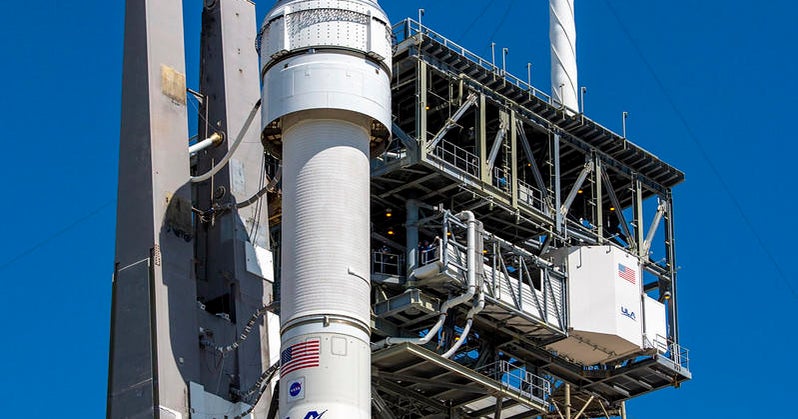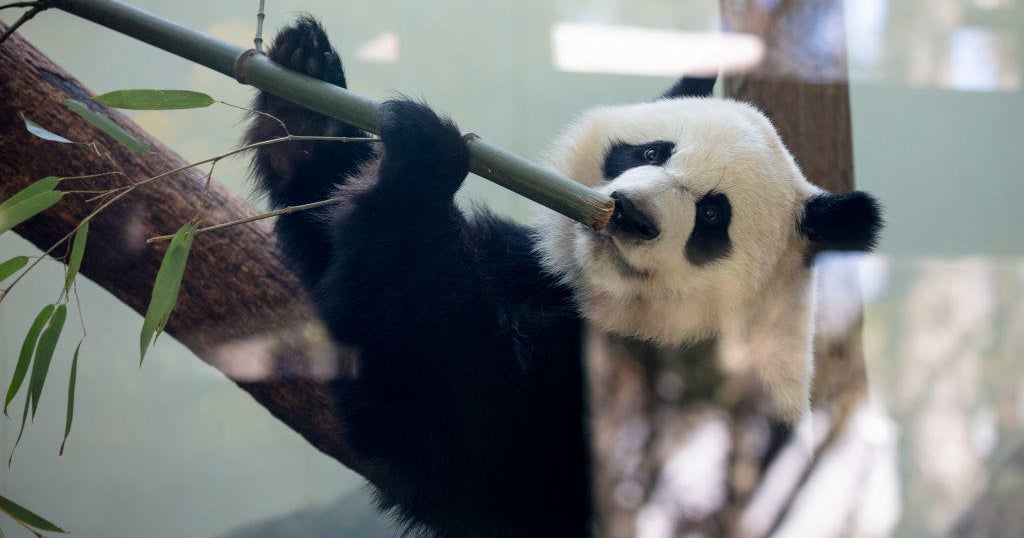Two spacewalkers continue space station power system upgrade
Two astronauts making their first spacewalk ventured outside the International Space Station on Friday amid heightened awareness of the threat posed by micrometeoroids and space debris in the wake of an impact that damaged a Russian crew ferry ship last month.
While the odds of a life-threatening impact during a spacewalk are low — on the order of 1-in-23,600 — the threat is "something that I think very much about in preparation for any EVA," said Keith Johnson, a NASA mission control spacewalk officer.
"The suit is designed to accommodate ... certain size puncture holes and yet still keep the crew members alive," he added. But "there's always risk."
Floating in the Quest airlock, Japanese astronaut Koichi Wakata and NASA's Nicole Mann switched their spacesuits to battery power at 8:14 a.m. EST to kick off a seven-hour and 21-minute excursion. They made their way outside a few minutes later.
They spent the day working on the right side of the space station's power truss, completing assembly of a Tinkertoy-like solar array support bracket and building a second bracket from scratch. One strut could not be attached, and its installation was deferred to an upcoming spacewalk.
Spacewalkers already have attached three ISS roll-out solar arrays, known as IROSAs, on brackets assembled on the left side of the power truss and one more IROSA on the right. Two additional roll-out arrays will be launched later this year for installation on the brackets Wakata and Mann are assembling.
The goal is to augment the electrical output of the space station's original set of solar arrays, which have degraded over their years in the harsh space environment. When the IROSA upgrade is complete, the lab will be back to full power.
Friday's spacewalk came a little more than a month after a micrometeoroid impact ruptured a coolant line on a Russian Soyuz crew ferry ship December 14, rendering it unusable for a planned crew return in March.
Instead, the Russians will launch a fresh Soyuz without a crew on February 20 to take the place of the damaged spacecraft. The crew of the damaged MS-22 ferry ship — two cosmonauts and a NASA astronaut — now will spend an additional six months in space before coming home in September.
The impact served as a reminder that astronauts and cosmonauts conducting spacewalks in the vacuum of low-Earth orbit, an environment populated by countless undetectable particles whizzing about at extreme velocities, face a small but very real threat.
NASA experts carry out a probabilistic risk assessment for micrometeoroids and space debris impacts before every spacewalk based on the latest assessment of the environment, where the astronauts will be working and a variety of other factors, including the timing of known meteor showers.
For the most recent spacewalk last month, the calculated odds of a spacesuit penetration during a six-and-a-half-hour EVA were in the neighborhood of 1-in-3,800. The odds of a "critical" penetration were on the order of 1-in-21,300. The numbers for Friday's spacewalk were similar, an official said.
In this case, "critical" means a penetration larger than 4 millimeters across resulting in an uncontrollable loss of oxygen. The micrometeoroid that damaged the Soyuz spacecraft was about 1 millimeter across.
Safety tethers and procedures are in place to enable a speedy return to the safety of the space station airlock in case of a life-threatening problem. The goal is to get back inside in 30 minutes or less.
As for impacts, the multi-layer spacesuit is designed to help ensure a smaller particle will break up during impact, before it can penetrate the innermost layer and allow air to escape.
But there are many unknowns in the calculation and despite extensive training and contingency plans, "it's just like anytime you get in an automobile, there is always risk," Johnson said.
"But we need to be willing to figure out the safest way to do it, get ready for all that could go wrong and that's how we do it to put our crew members in that position."







